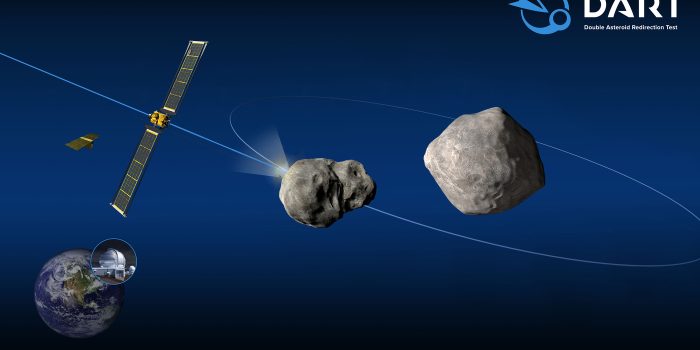In a stunning revelation, a citizen scientist, Jacint Roger Perez, has gifted the world a fresh glimpse into NASA’s groundbreaking endeavor: the moment when the DART spacecraft collided with the asteroid Dimorphos. Utilizing a trove of recently released raw images, Perez skillfully curated a series of stabilized videos, shedding new light on the monumental event.
The DART mission, an acronym for Double Asteroid Redirection Test, sought to test the feasibility of altering an asteroid’s trajectory using a spacecraft. Targeting the Dimorphos asteroid, a smaller counterpart orbiting the larger Didymos, this pioneering experiment aimed to assess our ability to avert potential asteroid-Earth collisions.
The impact, which transpired in September 2022, showcased a spectacle of cosmic proportions. As DART collided with Dimorphos, plumes of ejecta cascaded into the abyss, an unforeseen display that captivated both experts and enthusiasts alike.

Perez’s reimagined videos, shared on their X account under the handle landru79, afford viewers a mesmerizing visual journey. They portray the colossal dust filaments spiraling from Dimorphos, dwarfing scientists’ initial expectations. Surpassing predictions, the impact unleashed over a million kilograms of material, sculpting a trailing tail spanning over 10,000 kilometers for months.
However, the mission’s outcomes unveiled an unexpected revelation. While the impact did alter Dimorphos’ course, the significant shift in its orbital period—reduced by 33 minutes—derived predominantly from the material ejected post-impact. This critical insight emphasizes the need to consider an asteroid’s composition in future deflection strategies, revealing that loosely structured asteroids are more amenable to course alterations due to their capacity to shed material.
For enthusiasts eager to delve deeper, Johns Hopkins University offers an extensive repository detailing the DART mission and its groundbreaking findings. Furthermore, those intrigued by the image processing endeavor can access LICIcube’s images and explore Perez’s contributions on X.
In unveiling this new perspective, Perez’s work not only enhances our understanding of the DART mission but also underscores the intricate dynamics of altering an asteroid’s trajectory. It stands as a testament to the collaborative spirit that propels citizen science to unravel the mysteries of the cosmos.


